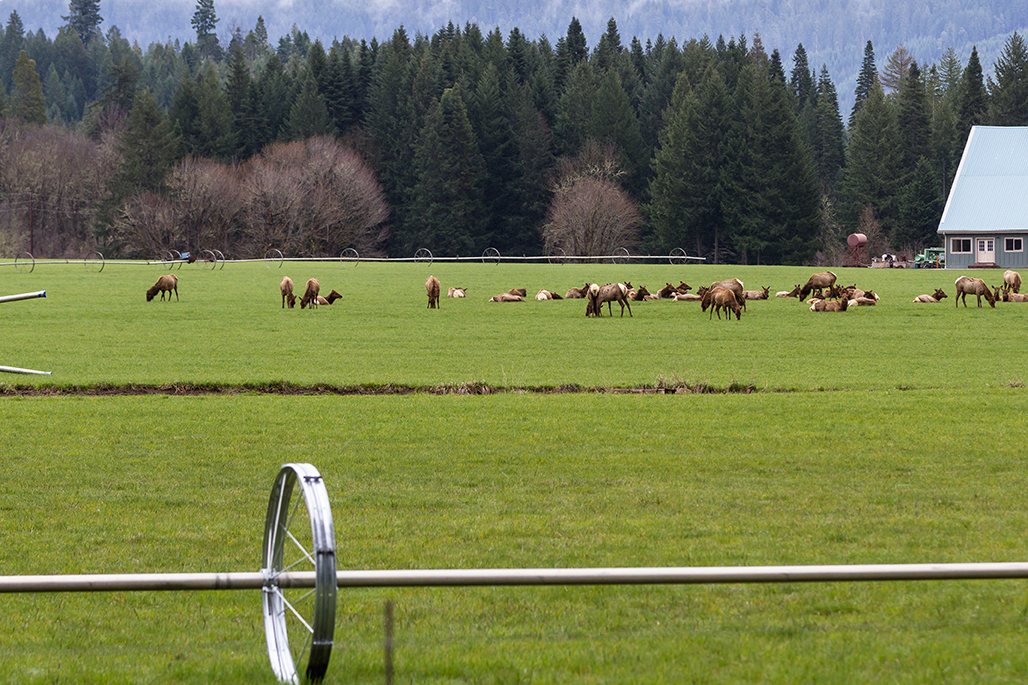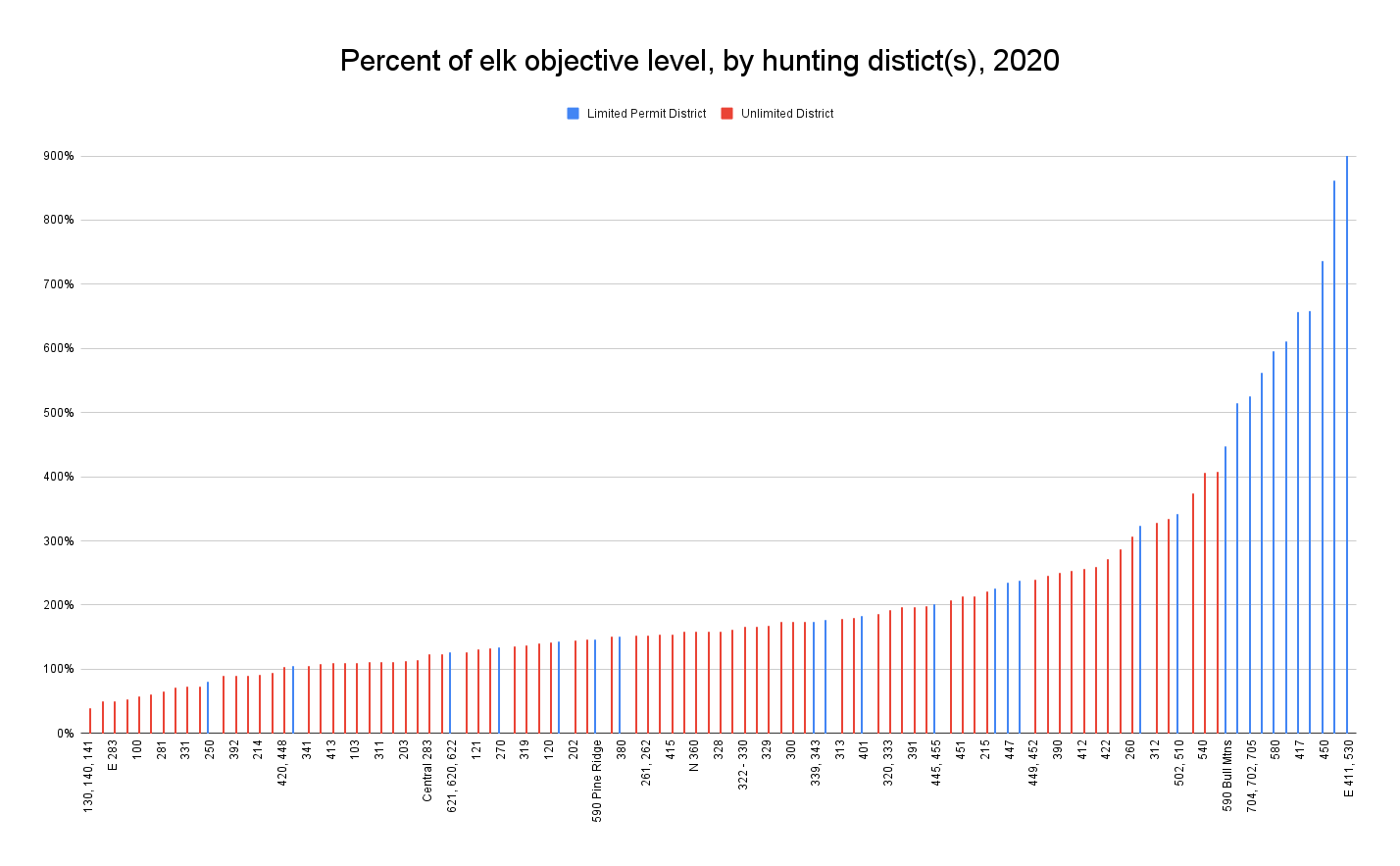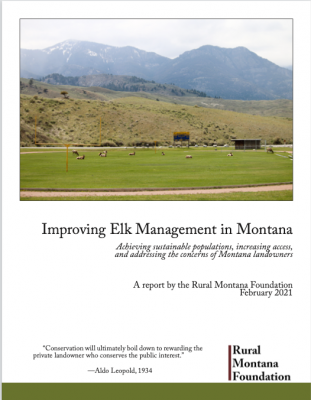Fixing Elk Management
For about a decade, FWP has singled out a handful of hunting districts in Eastern Montana with a limited-draw permit for either-sex elk hunting. With intentionally-limited hunting opportunity, elk populations in those districts have grown out of control, and are now between 4 and 10 times higher than FWP’s population objective levels.
In November 2021, UPOM petitioned the Fish & Game Commission to liberalize hunting opportunity in these districts by getting rid of the draw for archery hunting, and liberalizing rifle permits. That petition was denied in January 2022, and instead the Commission chose to keep limited hunting opportunity, and in some cases actually reduced the number of permits allocated.
The explosion in elk populations has been an incredible burden on landowners who provide habitat. Each year we see increasing damage to crops, forage, and infrastructure. FWP is in violation of state law by allowing populations to grow out of control—they have a statutory mandate to manage in a manner to reach objective levels. If they won’t follow the law willingly, the only alternative is to compel them to do so via court action, so in April 2022, UPOM filed suit in district court to do just that.

The State of elk populations
Elk populations are chronically over objective in most hunting districts around the state. The 2020 Elk Counts put statewide population around 170,000 animals. Populations are over objective in 77 of the 105 districts counted. The statewide elk population has increased by about 25% since the inception of the current Elk Management Plan in 2004.
The chart below shows how close to objective different districts are around the state. Those districts that are furthest from objective levels are the districts where the Commission has imposed a limited permit draw.

Recommended Solutions
Existing management practices clearly are not working. New solutions are needed to bring populations in line with objective levels. The Rural Montanan Foundation produced a comprehensive report on elk management, which concluded with the following recommended solutions:
- Eliminate limited permits for archery and liberalize rifle permits in districts that are over population objectives.
- Adopt more flexible season setting to increase hunting pressure in areas that are over-objective.
- Provide alternatives to the general hunting season for landowners in areas with chronically over-objective elk populations.
- Implement a publicly-funded, disease risk-transfer tool to mitigate financial risk faced by landowners who provide elk habitat.
- Expand testing for CWD, with aggressive testing efforts by FWP in areas where CWD has been detected.
- Eliminate policy of granting game damage assistance only to landowners who give up control of access to their property.
- Prioritize game damage assistance for landowners in areas with over-objective populations.
- Liberalize kill permits for landowners who are suffering inordinate game damage.
- More aggressively relocate problem elk from private property.
- Increase the amount of the Unlocking Public Lands Program tax credit.
- Prioritize opportunities for land transfers with private landowners.
- Increase landowner payments for block management.
- Establish a wildlife-use agreement program to “rent” ranches for public hunting.
- Implement transferable big-game permits for landowners in exchange for free hunting access.
- Increase transparency and base decision-making on objective standards.
- Require population objectives to be met before considering hunt quality or trophy opportunity.
- Increase flexibility in season setting.
- Utilize a liberal general hunting season, with damage and late-season hunts as a last resort.
- More aggressively manage predators to re-establish historic elk ranges and migration patterns.
